Our feet are amazing structures that carry us through every day, yet we rarely give them any attention, let alone care. As a dancer, I care about my feet a lot, and over time I have discovered many ways of massaging them to relieve their soreness, help prevent possible injuries, and so they can carry me more effectively through my life. I’ll share some of those with you here. You can take this post as a guided foot self-massage, or use any of these tricks alone for a quick fix. The exercises are in an order that makes sense to me, but feel free to reorder, modify, or even skip some of them. Use this to create your personalised, perfect self-care routine!
Roll the pads
The first thing I do when I start massaging feet is to roll the pads. By pads I mean the areas of thick skin on which our weight rests; mostly the area of the toes where they touch the floor, the ball of the foot, the area on the outside edge of the foot, and of course the heel.
This way of “rolling” tissue is to pinch it and move your grip without sliding on the skin; you’ll feel, through the skin, the tissue underneath move under your fingers. For the heel, you can also make a movement kind of like pressing a citrus fruit. It might feel like it burns, similar to how your hands feel warming up after coming in from the freezing cold. That is because in both situations blood rushes into tissue that has been deprived of it for a period of time.
Massage the sole
Next I gently walk my thumbs from my heel to the ball (although the other direction also works). For this, make sure you use your whole thumb to apply a broad pressure on your sole. You don’t want to feel a sharp poke here!
Twist along the long axis
Our foot is an extremely mobile structure. One of the ways it can move is twisting along the long axis.
You can grab one half in each hand, and twist the foot gently. These pictures show my foot – yours might move less (mine is well-practiced!) and that’s perfectly fine! Only go as far as you’re comfortable with, and certainly not into painful range (which doesn’t exist in most people; I just want to make sure nobody hurts themselves).
Twist along the short axis
The foot can also twist along the other axis.
Same thing: grab one half in each hand and gently twist.
Toe arch
There are many arches in the foot, and one of them that’s really flexible is the toe arch. You can gently exaggerate it and invert it to mobilise tissue around your toe-to-foot (tarso-phalangeal) joints. Here again, don’t force anything; just explore the mobility you have. This is enough to, over time, expand this mobility.
If you’re already quite mobile and want to take this further, trying making waves with your arch!
Mobilize tarso-phalangeal joints
We can massage this area further by passively mobilising the tarso-phalangeal (toe-to-foot) joints. Those are further into the foot than you might imagine, so I’ve provided an illustration.
You can grab around one of these joints with both hands, and gently mobilise the toe by moving the joint. This might be a bit uncomfortable at the beginning so again, go gently. It’s also a great way to remind your nervous system that this is a joint that can move, and in both directions. The picture shows me working on my big toe and third toe joints.
Spread the toes
This is maybe the most delicate part, so don’t just rush in to follow the pictures – please read on! Our feet can spread, but for many of us, this ability has been restricted by spending years, or even decades, in narrow shoes that prevent our feet from doing their job properly. Therefore, your toes might be very friendly with each other, without realising how a bit of distance can sometimes be great for friendships! This exercise happens in steps: first, try and interlace your fingers inbetween your toes, just a bit (the tip of the fingers, or the second phalanges).
If this proves challenging, just stay here for a few minutes (or less if it feels too intense). If it’s okay, or after having been there for a while and it starts to feel pleasant, you can wiggle your fingers in various ways, and feel how it affects your toes.
The next step is to interlace your fingers and toes all the way. If the first step is challenging, wait for it to feel comfortable before you try this second step. If the first step feels okay but this one is challenging, stay a few minutes (at least 3, ideally 5) with your fingers partially interlaced first, before moving to fully interlacing.
Once you’re comfortable interlacing your fingers and toes fully, you can move your hand in several ways. For instance, you can bring your toes to full extension and full flection:
You can also make the same motion you would do if you were warming up your wrists by rolling your hands together with interlaced fingers. Generally, feel free to explore what movements work for you, what feels nice, what helps you…
So here you are, a wonderful foot massage! Go ahead and treat your feet, and spread the love (and your toes)!
Continue reading: Explore Your Foot, The Ultimate Neck Self-Massage, Foot Posture and Alignment.
This post also exists in French.
Want more like this?
Check out the following blogs from massage therapists I know from around London:- On The Run Health and Fitness on running, nutrition and sports massage.
- The Soma Room on sports massage and exercise.
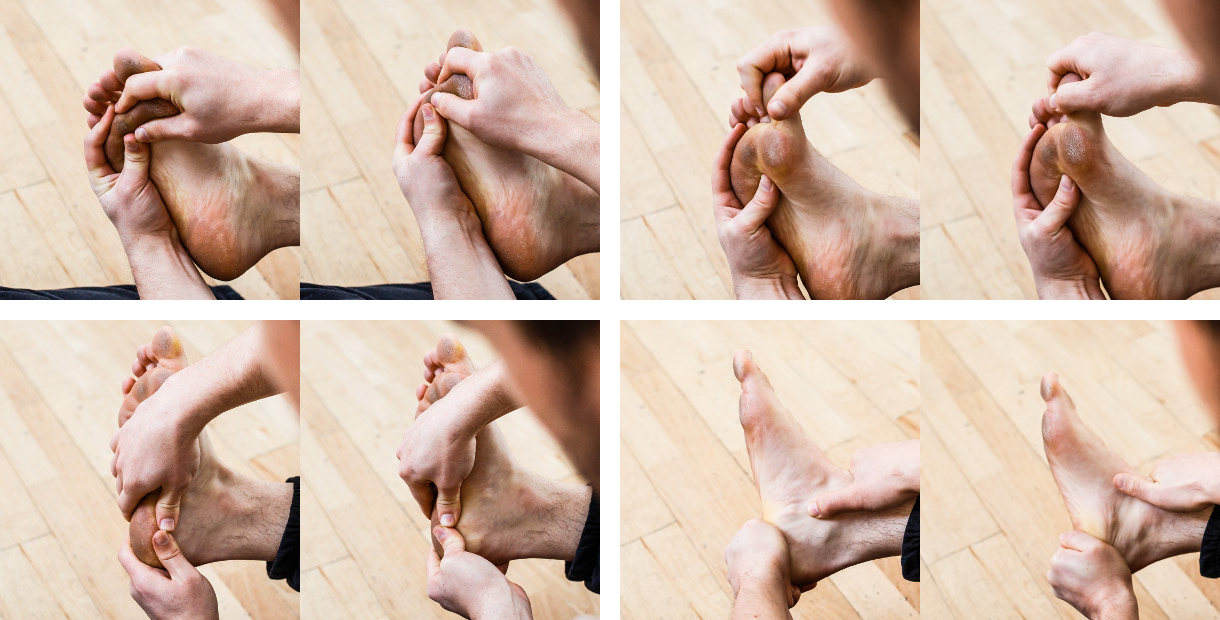

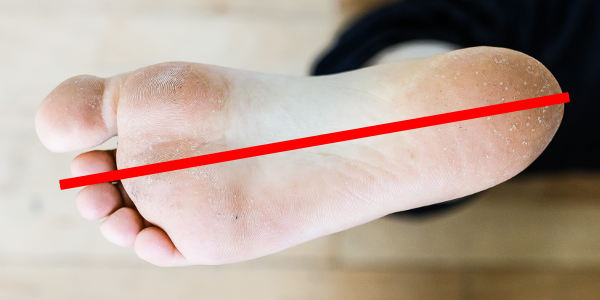
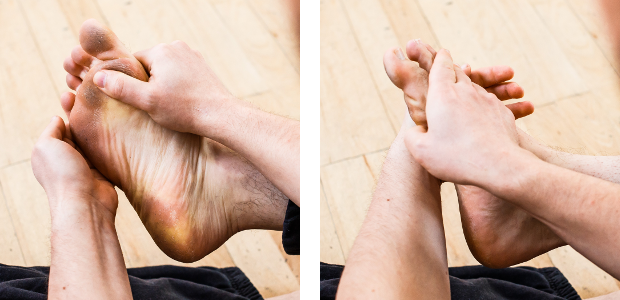
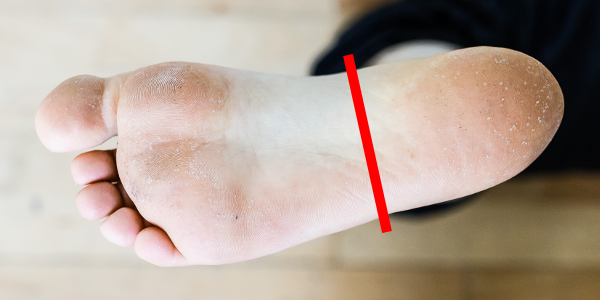
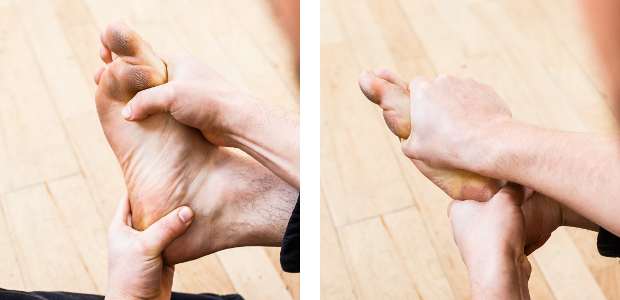
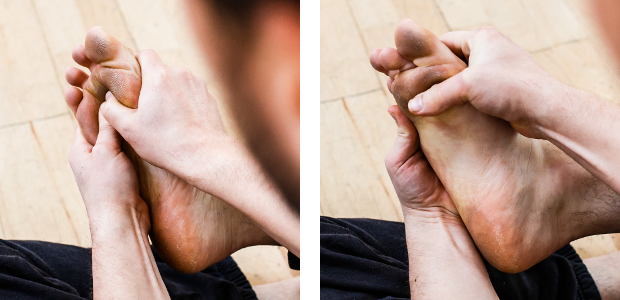
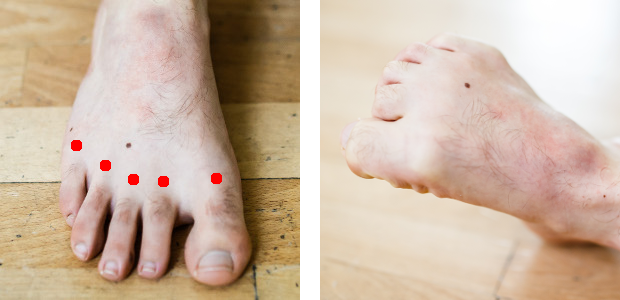

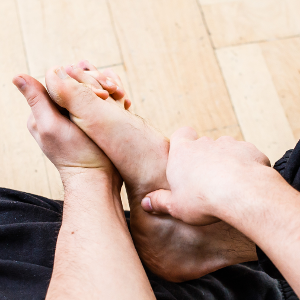

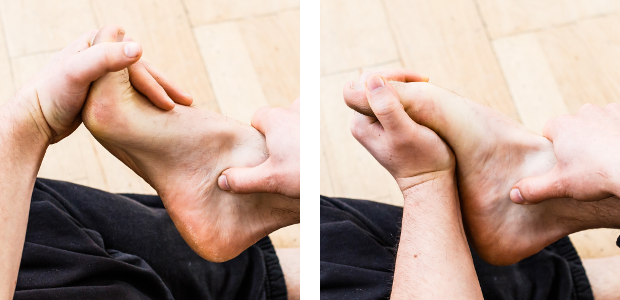

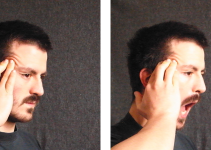

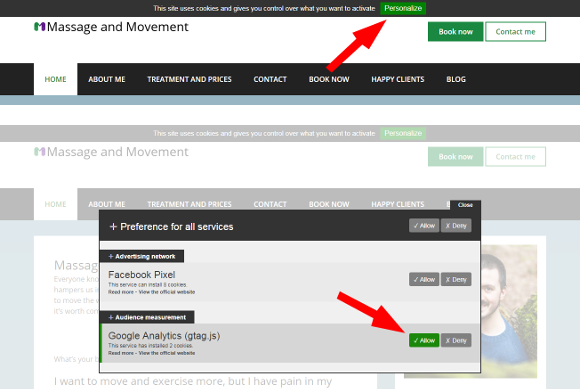
No Responses